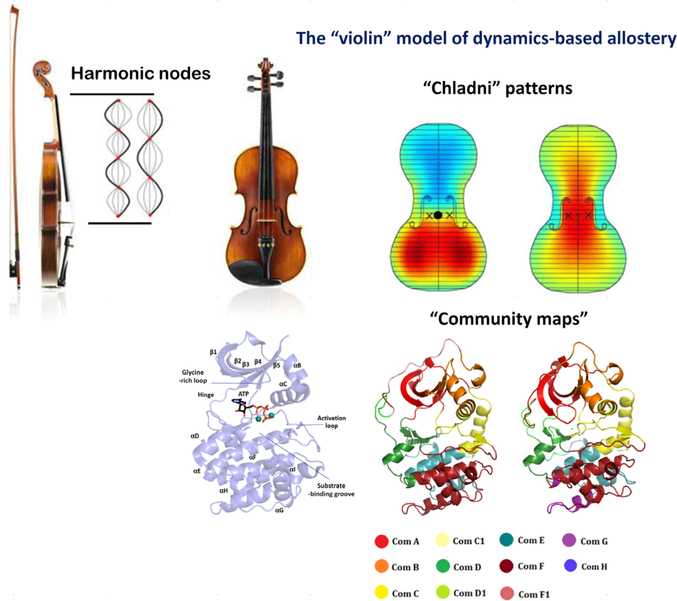FIG 6.
The “violin” model of dynamics-based allostery. Harmonic nodes at the stem of the violin create a “Chladni pattern” on the body of the violin. These Chladni patterns are descriptors of parts of the body of the violin that vibrate in sync or out of sync. Each harmonic creates a distinct Chladni pattern. Using this analogy, we argue that a protein kinase domain works like the body of a violin wherein the internal vibrations/motions of the protein are remodeled based on the allosteric effector. Every effector creates a distinct “community map” much like a distinct Chladni pattern for each harmonic of the violin. Chladni patterns were taken from reference 60. Colored regions of the violin denote the regions that vibrate together. This is analogous to the “communities” of residues in the protein structure that share the same dynamics-based information.

